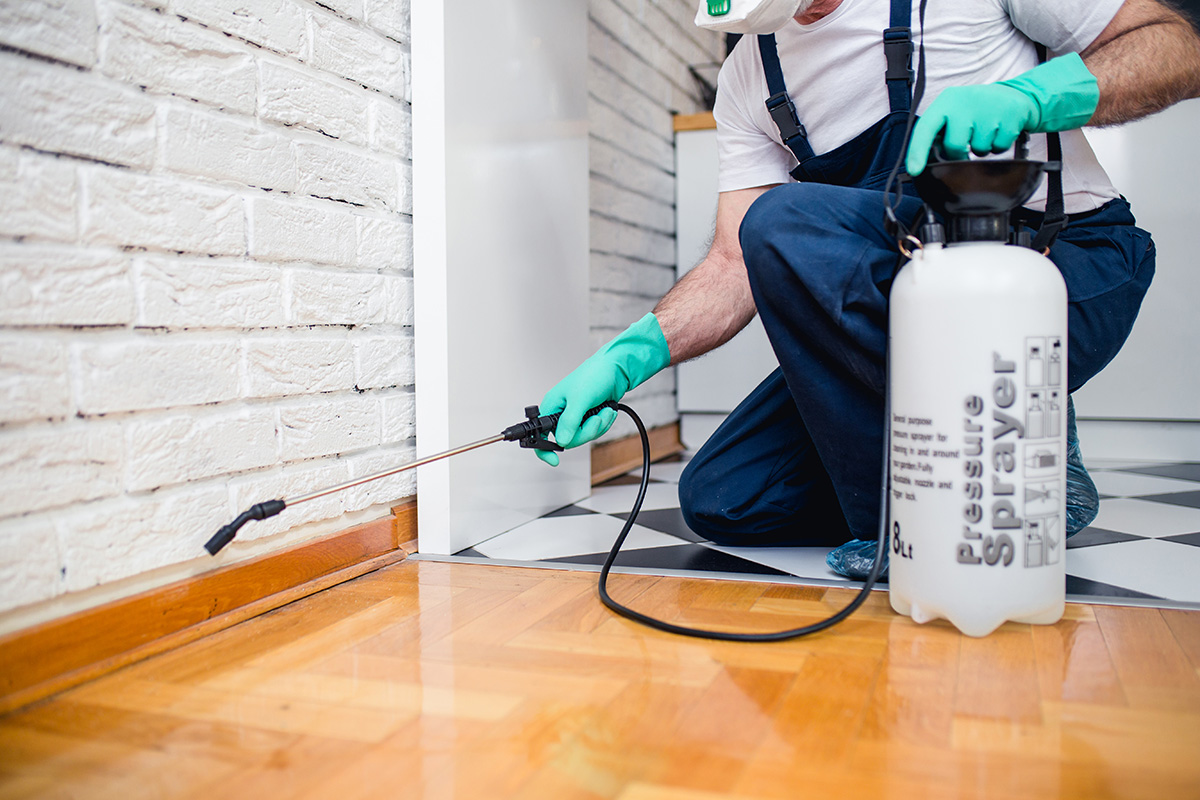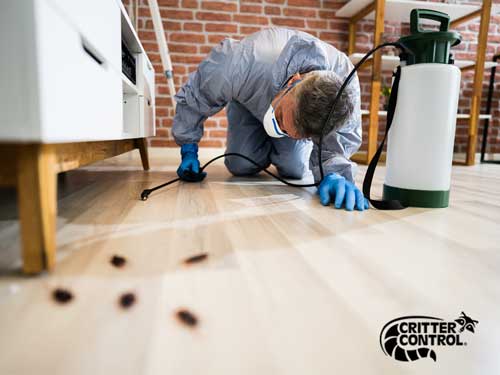High Quality A1 Pest Control Services Charlotte - Safeguard Your Home
Bed Bug Treatment Break Down: Contrasting Chemical Vs. Non-Chemical Solutions
In the world of bug control, specifically when dealing with the persistent issue of bed bugs, the selection in between chemical and non-chemical therapy services can be an essential one. Both strategies use distinctive advantages and downsides, affecting factors such as efficiency, safety factors to consider, and overall cost. By examining the nuanced details of each technique, a more clear understanding of which path to seek in dealing with a bed insect problem can be acquired.
Effectiveness of Chemical Treatments
Chemical treatments for bed pest infestations have been widely identified for their fast and potent efficiency in eradicating these pests. When thinking about the efficiency of chemical treatments, it is vital to recognize that they can provide a fast and comprehensive solution to a bed pest trouble. Professional pest control operators frequently rely upon pesticides to target bed bugs at different stages of their life process, consisting of adults, nymphs, and eggs. These chemicals typically work by interrupting the bed pests' nerve system, leading to paralysis and eventual death.
Additionally, chemical treatments have the benefit of providing recurring results, suggesting that they can proceed to remove bed pests also after the initial application. This residual activity is particularly useful in combating any type of prospective re-infestations. In addition, the rapid activity of chemical treatments can bring relief to people dealing with severe bed insect invasions, allowing them to reclaim control of their space rapidly.
Safety And Security Interest In Chemical Solutions
One crucial facet that needs mindful factor to consider when using chemical services for bed pest therapy is making sure the security of residents and the setting. Exposure to particular chemicals made use of in bed insect therapies can lead to respiratory system problems, skin inflammation, or various other damaging responses, especially in people with pre-existing conditions or sensitivities.
Moreover, the environmental influence of chemical services is an additional considerable factor to consider. Some pesticides utilized in bed pest therapies may be unsafe to valuable insects, wild animals, and ecosystems if they seep into the dirt or water supply. It is vital to use chemical treatments carefully, adhering to safety and security standards, and considering much less poisonous alternatives to mitigate these threats and guarantee the risk-free and reliable administration of bed bug problems.
Benefits of Non-Chemical Techniques
Thinking about the prospective safety issues and environmental impact linked with chemical options for bed bug therapy, exploring non-chemical strategies provides an encouraging option with a number of distinctive benefits. Non-chemical treatments are ecologically friendly, as they do not contribute to air or water air pollution, making them a lasting selection for bug control.
Furthermore, non-chemical options can be effective in targeting bed bugs, consisting of hard-to-reach areas where chemical treatments might not permeate - A1 bed bug treatment in charlotte. Techniques such as warm treatment, vacuuming, steam cleaning, and bed mattress coverings give detailed eradication without the usage of harmful chemicals.
Limitations of Non-Chemical Treatments

Furthermore, non-chemical therapies often call for numerous applications to achieve successful removal. This can be time-consuming Bonuses and might not constantly ensure total removal of all bed bugs and their eggs, especially in covert or hard-to-reach places.
In addition, the success of non-chemical treatments greatly relies upon appropriate implementation and thoroughness, which can be challenging for individuals without expert knowledge. Poor application of non-chemical methods may lead to insufficient eradication, causing consistent infestations and the demand for added treatments.
For that reason, while non-chemical treatments have their advantages, it is crucial to recognize these restrictions and consider them when figuring out the most effective technique for managing bed insect problems.
Price Contrast: Chemical Vs. Non-Chemical Options
Offered the restrictions review connected with non-chemical treatments, a crucial aspect to review in the context of bed bug management is the cost contrast in between chemical and non-chemical options. Chemical treatments generally involve the application of insecticides by professionals, which can vary from $250 to $900 per area, depending upon the seriousness of the infestation and the size of the location to be dealt with. In contrast, non-chemical treatments like warmth therapy or heavy steam can be extra pricey, with prices ranging from $1,000 to $6,000 for an entire home. While the first price of chemical treatments might appear lower, numerous therapies may be needed to fully eradicate the problem, potentially enhancing the general cost. On the various other hand, non-chemical choices might give a more environmentally friendly and sustainable remedy, although they can be cost-prohibitive for some people. Eventually, when thinking about the cost of bed insect treatment choices, it is essential to evaluate the ahead of time costs versus the efficiency and lasting sustainability of the selected approach.
Verdict

Thinking about the potential safety problems and ecological impact associated with chemical options for bed pest treatment, checking out non-chemical strategies presents a promising choice with several unique advantages.Offered the limitations associated with non-chemical treatments, a vital facet to examine in the context of bed pest monitoring is the cost comparison between chemical and non-chemical choices. In comparison, non-chemical therapies like warmth treatment or steam can be a lot more costly, with prices varying from $1,000 to $6,000 for an entire home. While the initial expense of chemical treatments may seem reduced, multiple therapies might be required to fully get rid of the infestation, potentially enhancing the overall cost.In conclusion, when contrasting chemical and non-chemical bed bug treatment alternatives, it is crucial to consider performance, safety, benefits, limitations, and cost.